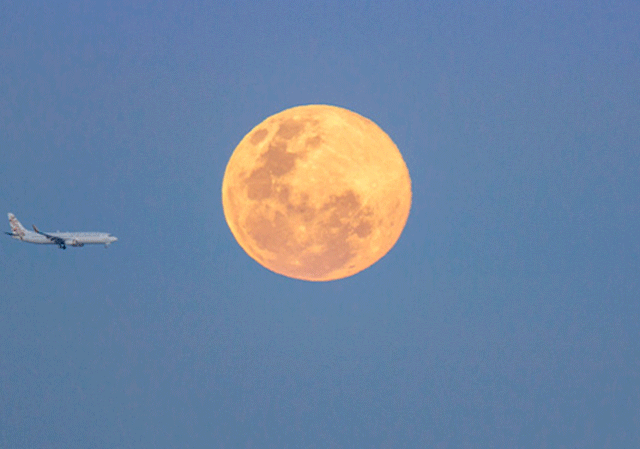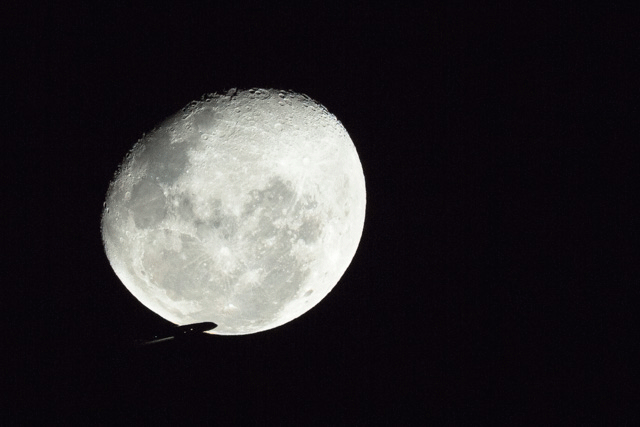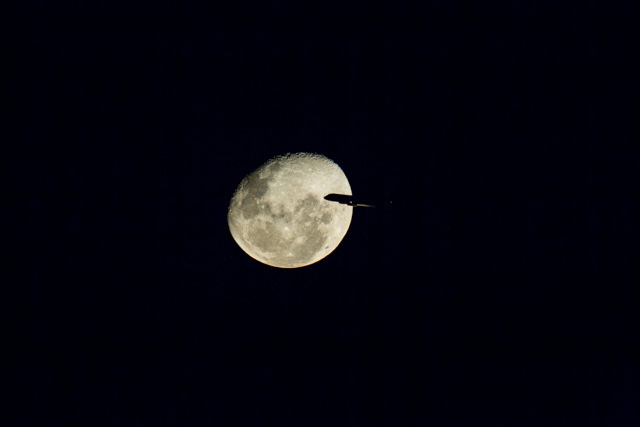How I Shot a Plane Flying Through the Supermoon
![]()
So an image of mine (@lightbrekkie) appears to be doing the rounds lately on Instagram and you may have seen it.
One of those normal days started with my phone going crazy on notifications before I realised that a popular hub on Instagram picked it up. The next thing I knew is that the image was pushing 130,000 likes and was being shared by various hubs and avenues on Instagram and Facebook:
![]()
![]()
The aforementioned image is of a Virgin-badged Boeing 737-800 flying past a bright yellow full moon. I received a lot of interesting feedback about the photo, the large majority of which have been very positive, and then some which have been a bit more thorny along the lines of ‘I don’t believe it, therefore it must be Photoshop’ which, in a way is somewhat flattering in itself too.
I came to the conclusion that one always has to take what the masses say with a pinch of salt.
![]()
![]()
Yep. People actually left those comments.
I thought I would take the opportunity to discuss my image, perhaps help someone plan a similar image, and if I’m really lucky, help restore people’s faith that sometimes the picture you were looking at actually was a fair representation of something that happened in the world we live in.
On 12 July 2014, a supermoon event was on the cards and I planned an image of it. What’s a supermoon? Simply put, the moon’s orbit is elliptical, and when a full moon (or a new moon) coincides with the closest point of this orbit, the moon appears somewhat bigger than usual- hence a supermoon.
While moon on sky shots are generally a nice thing to reflect upon, they aren’t generally the best way to utilise the supermoon photo opportunity. While the moon is actually bigger in appearance, it really is relative to what else is in frame. If you have a shot of just a moon against sky, you could essentially have made the same image by shooting a standard, boring moon and then cropping in a touch.
Being said, a plane in a moon is pretty much the same as that — you can’t really tell if the moon was bigger or smaller than usual because the plane could have been close to you (a relatively bigger looking plane) or much further (a relatively bigger looking moon).
What you probably want to best illustrate the largeness of a supermoon is a good juxtaposition of subject matter — perhaps a building, or even better, something a bit more dynamic, such as people. My learned friend Mark Gee executed this beautifully with his piece ‘Full Moon Silhouettes’ a while back and if you haven’t already viewed this, why haven’t you?
The gear I was using on the day was a Canon 5D Mark III, a 400mm f/5.6L, 1.4x and 2x Extender III, and a sturdy tripod. On full frame, 400mm is a good focal length to start at, but essentially, you’ll be able to greater accentuate the size of the moon the greater your telephoto reach is. For this reason, a crop sensor might be an added bonus if you have one.
The location I picked had an opportunity for a moon rising with a land feature (Port of Brisbane) with some other interest points such as passing ships. One of the tricky things with getting the shot of a moonrise from sea level though is that due to atmospheric refraction, the rising moon often tends looks somewhat distorted or oval in shape. While that could be somewhat interesting another issue is that closer to sea level, especially if you live somewhere reasonably urban, there are likely to be pollutants in the atmosphere such as dust and smoke which while responsible for those occasional brilliant red sunsets, also reduces the amount of moon detail/contrast you can capture.
Using the The Photographer’s Ephemeris Android app (also available on iOS), I was able to ascertain before the date that moonrise in Brisbane, Queensland, Australia occurred at 5.03pm on 12 July 2014. If you’re a landscape, outdoor, or even wedding photographer and you don’t use TPE or something similar, check it out — apart from moonrise, moonset, sunrise, sunset times, it also shows the direction the sun or moon is going to be in at those times, in addition to a host of other features you may find useful for planning your photograph.
A moonrise on the horizon looked spectacular on location, but in the available light conditions, I was not able to squeeze enough out of my gear to capture the scene in any kind of interesting way. The dust and fading light reduced detail on the moon, and the half-light really brought out more noise than I could salvage from the RAW file.
Nonetheless, I still had my opportunity for a plane shot. As the moon rises from behind the dust and smoke close to ground, clarity improves, which is why a moon up in the sky is usually much clearer (though less intense in color) than a moon near the horizon. To help plan this shot, I used FlightRadar24, another Android app, which showed plane locations and paths in real time, and also provided some flight details.
In each moonrise session, you will have a few opportunities to get the shot, assuming you place yourself somewhere with a good view of the flight path. What I found from watching planes come into (and leave from) a reasonable sized airport, is that the paths they take close to the airport are fairly similar, apart from slight variations depending on plane size and route.
For example, from where I was, quite a few of the planes were leaving and would cross the moon’s path once, then bank and pass the moon’s path once again much further away.
![]()
![]()
![]()
![]()
![]()
The rest is all about having the right settings and waiting for the shot. To help get you started, the settings I used were 1/250s, f/11, ISO1600 at 800mm (400mm f/5.6L + 2x Extender III), in manual exposure, manual focus mode, and continuous shooting mode.
Essentially, you need a fast enough shutter speed to capture the moon, freeze the plane, and enough light to expose your shot, but not so much that the moon is overexposed. In my settings above, f/11 was unfortunately what happens when you put a 2x Extender on a f/5.6 lens, and until Canon (or Virgin) decides to generously send me a 600mm f/4L IS II to take even more amazing photos with, my trusty 400mm f/5.6L will have to do. You could raise your ISO if you need to, but noise does present itself in the final image at high ISOs particularly if light quality is poor (twilight, indoors etc).
When setting up your shot using very long focal lengths, you will also notice that every vibration is magnified. Footsteps on the ground for example, may be sufficient to introduce unwanted movement into your image. Make sure your tripod is one that is as sturdy as it can get (I use a Benro Carbon Travel Flat tripod, which I love for its sturdiness and also its very portable form factor), and if you have a remote shutter release such as a TC80N3 or similar, use it.
All you have to do next is manually focus on that moon, make occasional adjustments when it starts pushing toward edges of your frame, and with that hand on the cable release, wait for that plane. Or in my case, Virgin Australia VA107, Wellington (WLG) – Brisbane (BNE) coming into land. Which, to the troll quoted above, is why its landing gear was down. Not to get added drag to slow down for photographers on Earth. You doughnut.



About the author: Ryan Lee is an Australian photographer whose work documents travels, landscapes, wildlife, the night sky and a picturesque life. You can follow his work or get in contact via Instagram: @lightbrekkie.